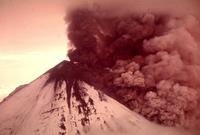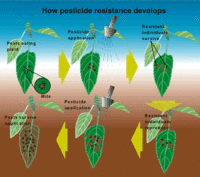-
New technique allows better monitoring of water quality
Researchers have developed a new technique that uses existing technology to allow researchers and natural resource managers to collect significantly more information on water quality to better inform policy decisions. In addition to its utility for natural resource managers, the technique will also allow researchers to develop more sophisticated models that address water quality questions.
-
-
Flood risk in Europe could double by 2050
Losses from extreme floods in Europe could more than double by 2050 because of climate change and socioeconomic development. Floods in the European Union averaged 4.9 billion euros a year from 2000 to 2012. These average losses could increase to 23.5 billion euros by 2050. In addition, large events such as the 2013 European floods are likely to increase in frequency from an average of once every sixteen years to a probability of once every ten years by 2050. Understanding the risk posed by large-scale floods is of growing importance and will be a key for managing climate adaptation.
-
-
What use are apps when your web infrastructure is underwater?
This winter has seen unprecedented high winds and flooding resulting in widespread and in some cases, long-lasting power outages in the United Kingdom, particularly in the west of England. Time and time again, companies have advised their customers to go online to check their Web sites for the latest information. Some organizations have even created apps specifically designed to assist flood victims; others have established Facebook self-help groups. There is a fundamental problem here: There are two primary ways in which we gain access to the Web, via a landline and using a mobile connection. Within our homes the landline connects to a wireless router and also, for a lot of homes, a cordless telephone, both of which need electrical power to work. So, when the lights go out, your router and cordless phones are useless. The result is that at times of crisis, the customers in most need are often the ones with no access.
-
-
People want to save water, but do not know how
Many Americans are confused about the best ways to conserve water and have a slippery grasp on how much water different activities use, according to a national online survey. Experts say the best strategy for conserving water is to focus on efficiency improvements such as replacing toilets and retrofitting washing machines. The largest group of the participants, however, nearly 43 percent, cited taking shorter showers, which does save water but may not be the most effective action.
-
-
Real-time forecast of Hurricane Sandy accurately predicted storm’s track, intensity
A real-time hurricane analysis and prediction system that effectively incorporates airborne Doppler radar information may accurately track the path, intensity, and wind force in a hurricane. This system also can identify the sources of forecast uncertainty.
-
-
Volcanic eruptions explain recent warming hiatus

Volcanic eruptions in the early part of the twenty-first century have cooled the planet, according to a study led by Lawrence Livermore National Laboratory. This cooling has partly offset the warming produced by greenhouse gases, explaining why, despite continuing increases in atmospheric levels of greenhouse gases, and in the total heat content of the ocean, global-mean temperatures at the surface of the planet and in the troposphere (the lowest portion of the Earth’s atmosphere) have shown relatively little warming since 1998. Scientists note that human-induced – that is, greenhouse gasses emissions-related — change typically causes the troposphere to warm and the stratosphere to cool. In contrast, large volcanic eruptions cool the troposphere and warm the stratosphere.
-
-
Limitations and side effects of large-scale geoengineering
Despite international agreements on climate protection and political declarations of intent, global greenhouse gas emissions have not decreased, and with the accelerating industrialization of emerging markets, are not likely to any time soon. Therefore, large-scale methods – called geoengineering or climate engineering — artificially to slow down global warming are increasingly being discussed. Scientists say that the long-term consequences and side effects of these methods have not been adequately studied.
-
-
Damage to coastal infrastructure from storm surges, floods may reach 9% of global GDP
Damage to the world’s coastal infrastructure as a result of flooding, sea level rise, and coastline development is expected to cost as much as 9 percent of global Gross Domestic Product (GDP) according to a new report published in the Proceedings of the National Academy of Sciences(PNAS).
-
-
Improving livestock diets to bolster food security, combat climate change
Livestock production is responsible for 12 percent of human-related greenhouse gas emissions, primarily coming from land use change and deforestation caused by expansion of agriculture, as well as methane released by the animals themselves, with a lesser amount coming from manure management and feed production. A new study shows that within the current systems, farmers would find it more profitable in coming years to expand livestock production in mixed systems — where livestock are fed on both grass as well as higher quality feed — rather than in pure grass-based systems. This development, would lead to a 23 percent reduction of emissions from land use change in the next two decades without any explicit climate mitigation policy.
-
-
Not much is known about long-term health effects of chemical leaked in W.Va.
In January, 10,000 gallons an obscure chemical called 4-methylcyclohexanemethanol, or MCHM, used in processing coal, leaked from storage tanks into the nearby Elk River in the Charleston, West Virginia area, contaminating the water of more than 300,000 residents for days. To what degree MCHM affects long-term human and fetal health is a major concern for residents because of the lack of complete toxicology and other studies on the chemical.
-
-
50-state roadmap to renewable energy unveiled
Researchers recently developed detailed plans to transform the energy infrastructure of New York, California, and Washington states from fossil fuels to 100 percent renewable resources by 2050. The new roadmap to renewable energy for all fifty states was presented on 15 February at the annual meeting of the American Association for the Advancement of Science (AAAS) in Chicago. The online interactive roadmap is tailored to maximize the resource potential of each state.
-
-
Out-of-control giant satellite poses “Gravity”-style space debris threat

Envisat, a £1.8 billion, 9-meter-long behemoth, was launched by the European Space Agency (ESA) in 2002, and used ten sophisticated sensors to observe and monitor Earth’s land, atmosphere, oceans and ice caps. ESA, however, lost contact with the satellite in April 2012 — and declared the end of the mission soon after. The satellite now orbits the Earth free from human control at an altitude of 790 km — where the amount of space debris around the planet is greatest. In a paper, University of Leicester students point out that unless it is brought under control, Envisat could potentially pose a threat similar to the events which plague Sandra Bullock in the Oscar-nominated sci-fi thriller “Gravity.”
-
-
Studying the 2011 Mississippi and Ohio rivers flood for better flood preparedness
In May 2011, when the U.S. Army Corps of Engineers used explosives to breach a levee south of Cairo, Illinois, diverting the rising waters of the Mississippi and Ohio rivers to prevent flooding in the town, about 130,000 acres of Missouri farmland were inundated. It was the largest flood of the lower Mississippi ever recorded. Researchers took advantage of this “once-in-a-scientific-lifetime” occurrence to study the damage in order to demonstrate that landscape vulnerabilities can be mapped ahead of time to help communities prepare for extreme flooding.
-
-
Implementing solar radiation management, then stopping, would accelerate climate change
One geoengineering approach to slowing or reversing climate change is solar radiation management, which envisions spraying tiny sulfur-based particles into the upper atmosphere to reflect sunlight. This is similar to what happens after a major volcanic eruption, and many experts believe the technique is economically and technically feasible. Continuous implementation over years, however, depends on technical functioning, continuous funding, bureaucratic agreement, and lack of negative side effects. In a new study, researchers say that spraying reflective particles into the atmosphere to reflect sunlight and then stopping it could exacerbate the problem of climate change.
-
-
Resistance shapes the discovery of new insecticides

Recent news around the world has focused on the dangers of antibiotic resistance. – and the CDC estimates over two-million illnesses and 23,000 deaths occurred in 2013 as a result of antibiotic resistance in bacteria and fungus. But what of another type of resistance which can also have a huge impact on the population: that to insecticides? Livestock, for example, are affected by buffalo flies; farmers and customers are familiar with the total devastation caused by fruit flies; malaria mosquitoes and bed bugs are becoming more resistant to existing chemicals. Even our pets are affected: fleas and ticks are continuing their march, leading to a need for newer, often more expensive synthetic chemistries. The price of insecticide resistance — in the form of R&D costs for new compounds — is passed from chemical companies, to farmers, to consumers.
-
- All
- Regional
- Water
- Biometrics
- Borders/Immig
- Business
- Cybersecurity
- Detection
- Disasters
- Government
- Infrastructure
- International
- Public health
- Public Safety
- Communication interoperabillity
- Emergency services
- Emergency medical services
- Fire
- First response
- IEDs
- Law Enforcement
- Law Enforcement Technology
- Military technology
- Nonlethal weapons
- Nuclear weapons
- Personal protection equipment
- Police
- Notification /alert systems
- Situational awareness
- Weapons systems
- Sci-Tech
- Sector Reports
- Surveillance
- Transportation
Advertising & Marketing: advertise@newswirepubs.com
Editorial: editor@newswirepubs.com
General: info@newswirepubs.com
2010-2011 © News Wire Publications, LLC News Wire Publications, LLC
220 Old Country Road | Suite 200 | Mineola | New York | 11501
Permissions and Policies
Editorial: editor@newswirepubs.com
General: info@newswirepubs.com
2010-2011 © News Wire Publications, LLC News Wire Publications, LLC
220 Old Country Road | Suite 200 | Mineola | New York | 11501
Permissions and Policies
